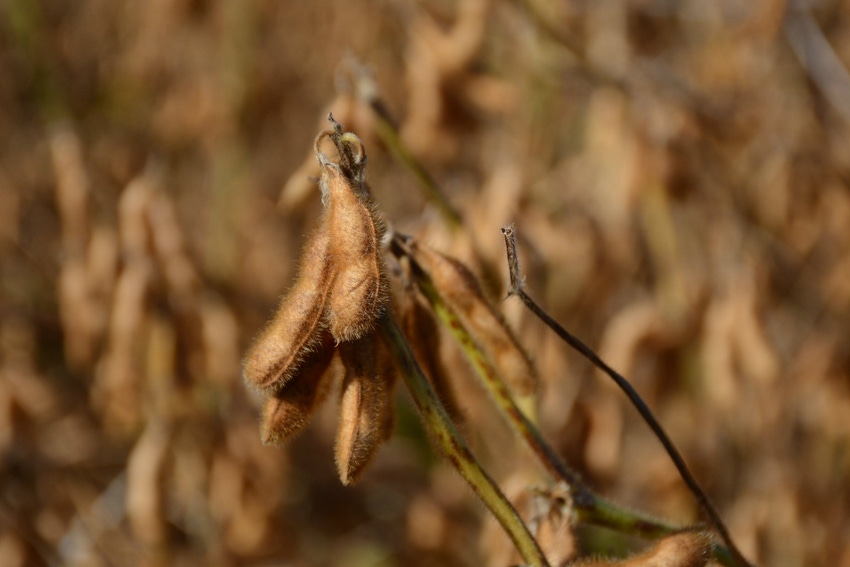
The protein levels of soybeans in the United States and globally has declined since the mid-1980s, but the demand for more protein-rich soybean meal continues to grow to meet the growing global need for feed for fish, hogs and poultry.
“Soybeans are the single-most important source of cultivated protein, followed by wheat and corn. Soy historically has been valued as a dense protein package. If you were to take soybean meal, cottonseed meal or peanut meal and adjust those all on a protein-equivalent basis, soybean meal will have the price,” said Owen Wagner, CEO of the North Carolina Soybean Producers Association, at the 31st annual North Carolina Commodities Conference at the Sheraton Imperial Hotel in Durham Jan. 9.
“Unfortunately, soy protein content is trending downward. Protein content of U.S. soybeans has fallen 1.5 percentage points since the mid 1980s. It would be one thing if that void was filled by oil. Oil is more valuable than meal on a per-pound basis. But that’s not the case. If you express the same information for oil on a meal basis, you see a similar level of decline in absolute terms,” he said.
Agronomists and plant physiologists attribute the decline in protein levels to the breeding of higher-yielding soybean varieties, which has created an inverse decline in protein varieties in the higher-yielding cultivars.
Competitors
Wagner does note that the protein content of soybeans from Brazil and Argentina, the top competitors of the United States, is also declining. The U.S. is not the only major soybean producing country dealing with the challenge. He also noted that the drop is not just limited to soybeans; Canadian canola has seen an even bigger decline in protein levels.
Many experts also attribute the decline in protein of U.S. soybeans to the gravitation of soybean production to the north and west to states such as North Dakota, South Dakota and Minnesota.
“This is not a problem we can pin solely on our counterparts in the Dakotas or Minnesota. It’s a nationwide problem. The declines are even more pronounced in the Corn Belt than in the northern plains,” Wagner said.
The good news for North Carolina farmers is that while protein levels are declining in that state as well, the declines are not as pronounced as in other parts of the country. “We are far much better than the U.S national average in terms of crude protein concentrations. We’re not the highest. That honors goes to our friends who grow soybeans in New Jersey,” Wagner said.
Wagner cautioned farmers that the protein deficit will eventually exact a cost on U.S. soybeans. He said there is some evidence this is already happening.
“Brazilian soybeans at the Port of Rotterdam consistently enjoy a premium over U.S. soybeans. The only justifiable reason for that is Brazilian soybeans have a consistently higher protein content than U.S. beans,” he said.
Sensitive to Cost
Wagner said a wealthier world is demanding more protein from soybeans. Most of the future global population growth is likely to occur in developing countries with these populations being more sensitive to the cost of protein sources they are choosing.
“Even though they are in search of more animal protein, they are not going to be eating animal proteins the way we Americans eat animal protein. They’re not going to be eating more hamburgers. The livestock mix is becoming more protein intensive,” Wagner said.
For example, the demand for farm-raised fish in the developing world is expected to continue to grow. “In the United States, the majority of the fish we eat is wild caught. In east Asia, that is not the case at all,” he said.
Farm-raised fish require more protein in feed rations than do poultry or beef or hogs. Fish need about 50 percent of their feed to come in the form of protein compared to 20 to 25 percent for poultry, 15 percent for hogs and five percent for cattle.
“There is more pressure for an increased dense protein package from the livestock industry globally, but the trends in term of protein are heading in the other direction,” Wagner said.

On hand for the 31st North Carolina Commodities Conference at the Sheraton Imperial Hotel in Durham Jan. 9 were Dr. Rachel Vann, North Carolina State University Extension soybean specialist, and Owen Wagner, CEO of the North Carolina Soybean Producers Association.
About the Author(s)
You May Also Like






